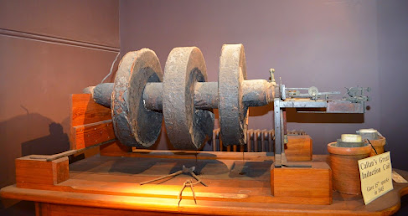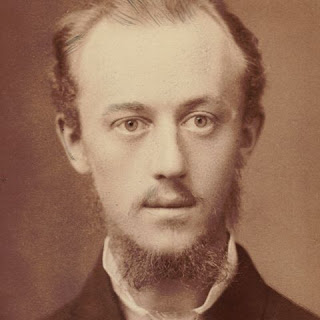Invention Problem or Time Requirement
Thus, after a new invention or discovery, man thinks of improving his invention or discovery, but human life is sometimes stuck at such stages, Where he needs to discover a new invention in order to advance his invention.
Benjamin Franklin's discovery of the use of electricity was completed in 1752, but the usefulness of the use of electricity was estimated almost a century later, When Thomas invented the world's first light bulb in 1879, Thomas's invention created an innovation in human life, The need for a new invention was felt to sustain this invention.
We know that many of you dear readers will be left wondering how we can ignore Thomas Alva Edson when it comes to electricity and bulbs, So sir, this is not the case at all.
The main purpose of our blogs is to inform you about the scientists that very few people know about, A small example of this is that we all know who invented the light bulb but we do not know who invented the use of electricity and we know who invented the car but this Don't know who invented the bicycle, There are so many inventions in the world that have been told somewhere in the pages of history and it is our responsibility to find them.
So, sir, now back to our topic, the problem that arose after the invention of the Thomas bulb was a proper and efficient system of transmission of electricity, and it is said that need is the mother of invention, As a result of which a new device was invented which has been commonly known as Transformer in every corner of the world since its invention till today.
Sir, today our topic of discussion is the invention of Transformer.
But today before we talk about the invention of the transformer, let's try to find out what is the use of this electronic device?
Simply put, a transformer is a device that divides an electric current into one or more circuits and maintains a certain level of electric current in the event of an increase or decrease in the current.
A clear example of this is that we often observe in our daily lives that in the event of rain or wind, we often experience a lack of voltage. In such a situation, one of the two things must be lost. Either your home appliances (televisions, irons or refrigerators) malfunction or the transformer in your area breaks down at your own risk.
Thus, we cannot entrust this invention of the transformer to a single inventor, But we think it is important to inform our esteemed readers that the invention of this invention was made in 1831 by Michael Faraday, a scientist from the United States. Is also known as the Fraud Law of Induction.
Later, in 1836, Irish scientist Nicholas Joseph Callan invented the world's first early transformer. Nichols named his invention the induction coil. Nicholas was one of the first researchers of that time who understood the relationship between the primary winding and the secondary secondary, which could have resulted in a much better electromagnetic flux.
 |
| Induction Coil |
Instead of providing alternating current, the batteries provided direct current, which caused the induction coil to rely on electrical contact waves, resulting in an interruption in the initial current to cause changes in the induction current.
In 1876, Russian engineer Pavel Nikolayevich Yablochkov developed a lighting system for induction coils.
What's special is that the coils attached to it basically acted like transformers, Later, in 1878, the Hungarian Ganz Factory began to develop a similar type of lighting system. By 1883, fifty such systems had been installed in Austria, Hungary.
In 1882, French inventor Lucien Gaulard and British engineer John Dixon Gibbs exhibited a device with an open iron cover called the Secondary Generator in London, Exactly two years later, the invention was exhibited in Turin, Italy.
Where it was used to design an electric lighting system, The invention was later sold to Westinghouse, a US-based manufacturer.
In 1884, three engineers from the Hungarian-based Ganz Works, Karoly Zipernowaski, Otto Titusz Blathi and Miksa Dery, determined that the open-core devices developed so far were not fully capable of controlling the power of electric current.
The following year, in 1885, he was introduced by three engineers to two different designs with closed circuits called the world's first regularly used novel transformers, These transformers later became known as ZBD transformers, In these transformers, copper was wrapped around iron wires and enclosed in an iron mold.
Z B D Transformers
Here, in order to increase the knowledge of our esteemed readers, let us say that ZBD is the only transformer that is commonly used in the world today. It is divided into two different types called core form and shell form, And these three engineers called this device for controlling the flow of electricity "transformer" which was then known as electromagnetic force.
In the same year, 1885, George Westinghouse JR, an engineer from the United States, bought the invention of Lucien and John, But Edson Electric Light, a US-based multinational company, insisted on developing a ZBD-designed transformer under US rights.
William Stanley, an American physicist, was tasked with designing a transformer for commercial use in the United States, As a result, Stanley developed a single-core induction coil system, which was later developed commercially in the United States in 1886.
But Westinghouse intended to further improve Stanley's design, and as a result of their efforts, in 1887, Westinghouse, Stanley, and his colleagues invented a low-cost, more advanced transformer.
In 1889, Mikhail Osipovich Dulio-Dobrovolski, a Polish-Russian engineer, developed the world's first three-phase transformer in Germany in an attempt to innovate the invention of the transformer, Later, in 1891, American engineer and inventor Nicola Tesla invented a high voltage transformer called the Tesla coil.
 |
| Three-phase transformer |
While researching the invention of the transformer, we have come to realize that this invention of the transformer has played a key role in advancing and innovating the discovery of the use of electricity.
Be sure to let us know your valuable feedback. Thanks for joining us in the blog so far- Syed Murtaza Hassan


















0 Comments